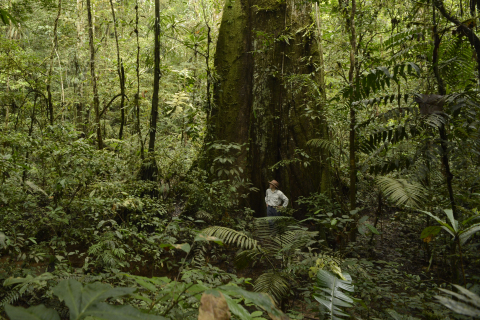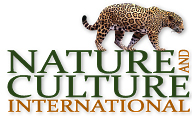PUYO, Pastaza, Ecuador & DEL MAR, Calif.--(BUSINESS WIRE)--Culminating three years of collaboration by provincial and local governments, indigenous communities and Nature and Culture International (NCI), the Provincial Council of Pastaza, Ecuador, established the 6.3-million-acre (2.5 million hectare) Pastaza Ecological Sustainable Use Area on Feb. 24. This vast area is larger than the state of Maryland and considered by scientists to be one of the most biodiverse areas on Earth.
Antonio Kubes, prefect of Pastaza Province, who has been a key proponent for the creation of the protected area, noted that the creation of this reserve will underpin the sustainable development of the region, providing benefits to the local population, while protecting a global resource.
Renzo Paladines, director of NCI Ecuador, said, “The creation of the Pastaza reserve is a global example of what local and provincial governments working together with indigenous communities can do to protect vital natural resources while ensuring their own long-term sustainable development and livelihoods.”
The newly declared Pastaza reserve, coupled with the neighboring 2.5-million-acre Yasuní National Park, will protect an immense swath of eastern Ecuador’s lowland Amazon rainforest. The area provides essential habitat to a wide range of mammals, amphibians, reptiles and flora.
Scientists have documented that this area of the Ecuadorian Amazon holds world records for a wide array of plant and animal groups, from amphibians to trees to insects. A single hectare (2.47 acres) in the region may contain more tree species than are native to the continental United States and Canada combined, according to a 2010 Texas State University study. Another study shows that amphibians, birds, mammals and vascular plants all reach near maximum diversity in this region, and the threatened giant otter can be found here along with jaguars and tapirs.
The area is also very culturally diverse, and the establishment of the Pastaza Sustainable Use Area will protect the lands of several indigenous nationalities that reside in the area including the Shuar, Achuar, Kichwa, Zápara, Andoa, Shiwiar and Waorani.
The process to declare the Pastaza Sustainable Use Area began three years ago and included extensive consultation processes with municipal governments, indigenous nations and communities residing in the area. NCI served as a technical advisor to the Pastaza government, working in concert with stakeholders to develop baseline data, define reserve boundaries, and provide information needed for establishment of the area. Watershed reserves for three of Pastaza’s largest towns have been incorporated into the core conservation zone of the Pastaza Area.
“The creation of the Pastaza Sustainable Use Area is a visionary declaration and a true gift to the Earth,” said Byron Swift, president of NCI. “NCI is proud to be a part of this process, and we look forward to working with the provincial and municipal governments and indigenous nations to protect this area for generations to come.”
About Nature and Culture International
Founded in 1997, Nature and Culture International (NCI) conserves biological and cultural diversity in some of the world’s most diverse ecosystems, primarily in the Andes and Amazon of South America. Over the last 20 years, NCI has helped local governments and communities protect 13 million acres and designate an additional 6.4 million acres as UN Biosphere Reserves. natureandculture.org




